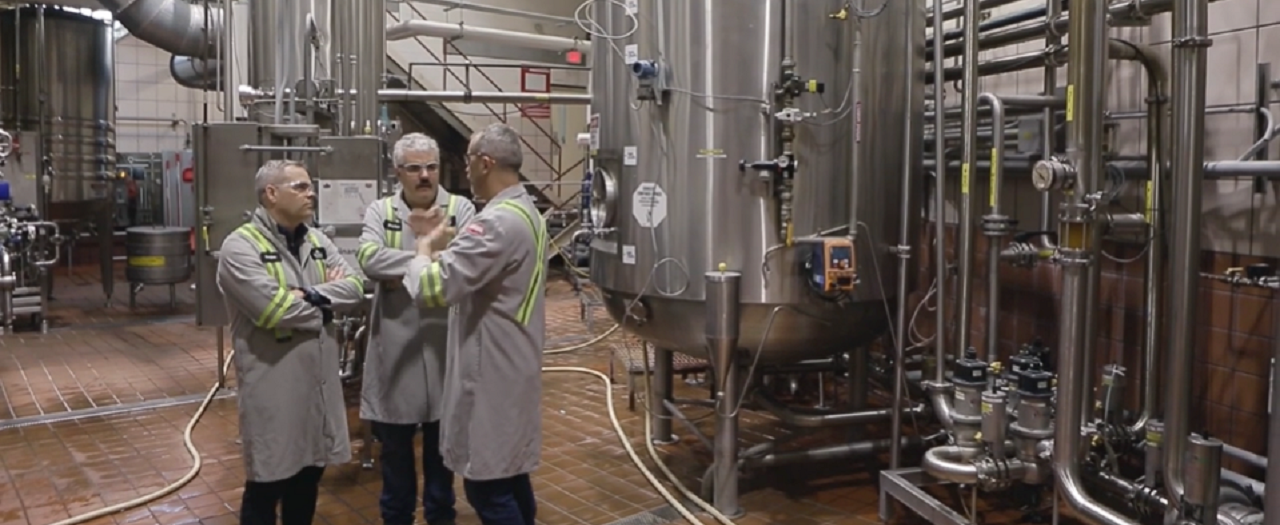How can production staff achieve optimal control with enhanced sequencing software?

Many operational challenges in the food, beverage and brewing production environments can be solved with innovative production controls and automation. Project managers, brewmasters, operations and engineering management are prioritizing and focusing on the constant need to optimize. The obligation to reinvent and adapt is essential in the context of where manufacturing is today: blurred product lines between manufacturers, changing workforce, health and safety, greater B2B and B2C demands, inventory and supply chain issues, more technology adoption and innovation. That said, production personnel are engaging automation suppliers to meet their enablement and advancement requirements.
Aside from satisfying the expectations of the sophisticated and educated customer, food, and beverage and brewing are looking to work smarter and not harder by controlling costs and meeting product yield and quality demands. There are automation companies, like Actemium Canada, that are consistently delivering beyond the expected. What are customers asking for today? A partnership with an automation consulting company that offers cutting-edge software solutions that empower production and deliver results such as cost savings, quality improvement, waste reduction and an increase in manufacturing throughput.
Shifts in technology in food, and beverage and brewing plant business practices in the last few years are all around crisis preparation methods. Two essential crisis preparation methods they are forecasting will be implemented, as per Euromonitor, is reshaping their digital strategies and greater investments in production automation tools, like enhanced sequencing software.
Modern automation and digitization provide more control
Generally, industrial process and packaging equipment relies on the information located within a Programmable Logic Controller (PLC) for their operation. The basis of the automation resides within the PLC, and if something breaks or there’s an issue, the operator calls maintenance to address the problem. The consequences of relying on PLC systems are lost production time, resource utilization and material losses that can lead to market shortage. These issues should be quite limited, however what is more often the case is when a production manager or brewmaster needs to optimize a sequence, they require a maintenance electrician to do so.
Now there’s enhanced sequencing software like FactoryTalk Brew and Meridian system sequencing software which incorporates Rockwell Automation’s PlantPAx system. This software modifies/changes the data within, eliminating the PLC, and the operator/brewmaster is provided full control via a web interface that can be accessed anywhere using their mobile device or desktop computer. This type of interface also plays to its strengths of enhanced visualization of an operator’s/brewmaster’s process on-the-spot and in real time.
An example of this, Actemium Canada has a client in the consumer-packaged goods industry launching a greenfield project. They intended to equip their new facility with an innovative software solution that places real system control – in the hands of their operations staff. They wanted something customized, that works for their needs today, but can also support their future technology and automation requirements. Actemium has provided a similar software solution in this instance, that can also be used as a building block that allows for future batching system requirements.
There are many moving parts in this type of open application. It’s flexible enough to address the varying needs of the customer at each plant but standardized to the point where staff at various production sites can share knowledge and support one another. In the case of our consumer-packaged good client, Actemium preconfigured and tested the solution in house to ensure a rapid installation and keep the capital expenditure to a minimum. The powerful exception-based, reporting analytics are available in real time. In fact, the system sends email alerts directly to the operator when a process deviation occurs allowing them to remain informed (remotely or on-site). Enhanced operator troubleshooting tools, allow problems to be readily identified and addressed in short order.
Measuring success related to intelligent sequencing
Changes are essential to keeping the operation up and running at maximum efficiency and minimal losses. The digital transformation of production means that equipment, processes, and upgrades are never finite. The power of intelligent sequencing allows food, and beverage and brewing producers to keep up with the demand, by optimizing the flow of material to maximize throughput and take advantage of every bit of the capacity that has already been invested in. There are many ways to evaluate the success of sequencing software. Consider your goals, aside from taking less time and resources, was success achieved in the following ways:
- Better consistency
- Closer fit for size
- Elimination of ongoing support costs
- Faster implementation
- Greater process analytics
- Improved quality
- Less waste
- Lower installation costs
- More production per day
Enhancements in any of these areas can offer production continuity to meet consumer demand. In addition, to prevent and mitigate further risk, something else to consider, it’s essential that production facilities work with automation technology and software partners who offer scalable solutions. Solutions that will grow with company manufacturing activities and that offer full support throughout and beyond any upgrade, improvement, or optimization project lifecycle.

